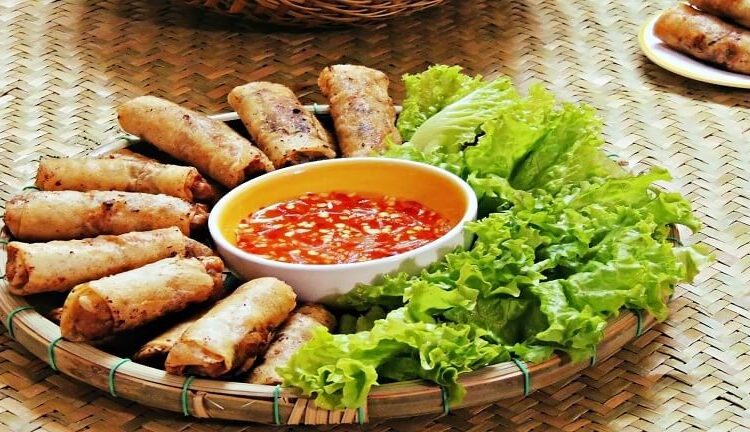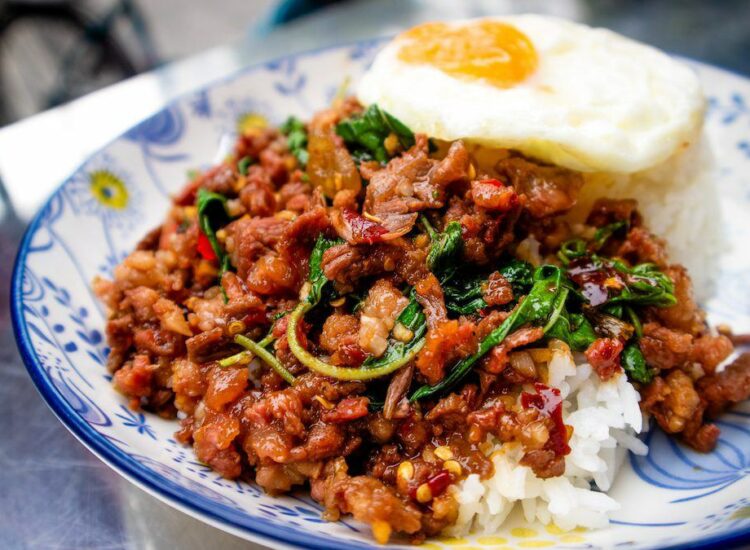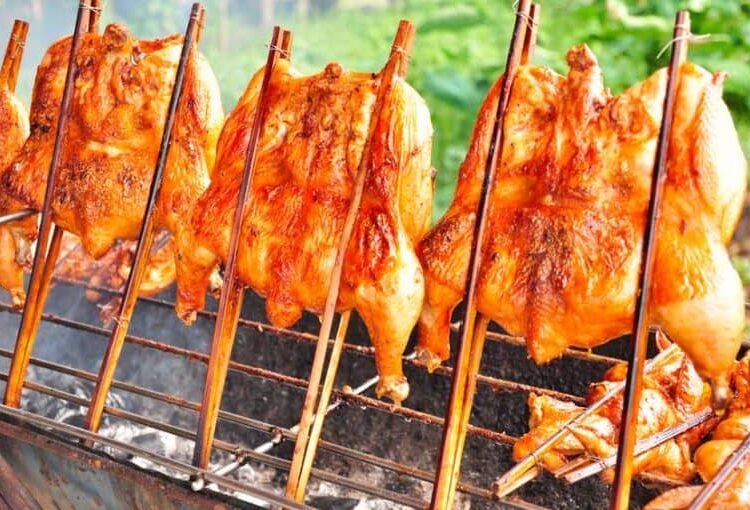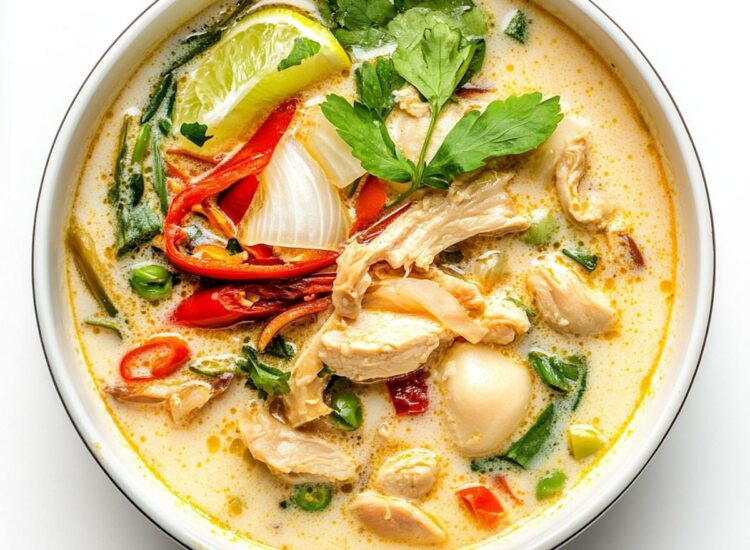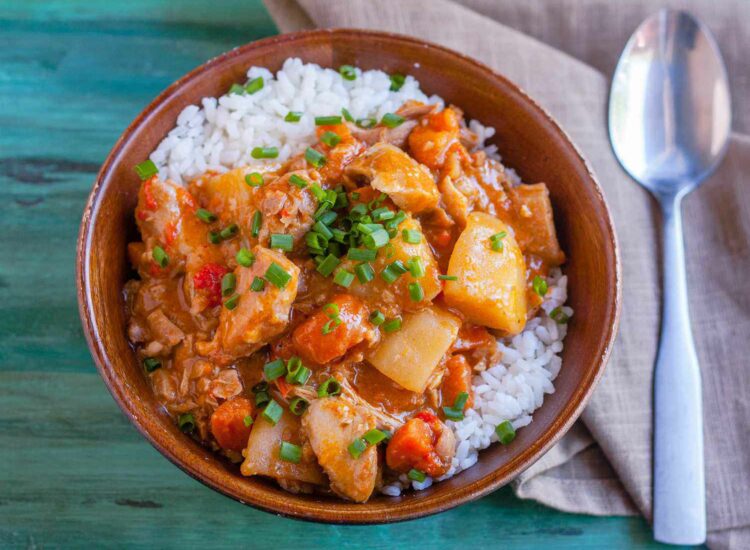The Delicate Dance of Flavors and Textures: An Exploration of Vietnamese Gỏi Cuốn
Gỏi cuốn, often translated as fresh spring rolls or summer rolls, is more than just a dish in the vibrant tapestry of Vietnamese cuisine. It is a culinary poem, a delicate dance of fresh, contrasting textures and harmonious flavors, all meticulously wrapped in translucent rice paper. This seemingly simple creation encapsulates the essence of Vietnamese culinary philosophy: balance, freshness, and the art of combining seemingly disparate elements into a unified and delightful whole. Beyond its refreshing taste and visual appeal, gỏi cuốn holds cultural significance, representing family gatherings, the abundance of fresh produce, and the ingenuity of Vietnamese culinary traditions. This exploration will delve deep into the intricacies of gỏi cuốn, uncovering its history, ingredients, preparation, cultural relevance, and its enduring appeal both within Vietnam and across the globe.

The origins of gỏi cuốn, like many traditional dishes, are somewhat shrouded in the mists of time, evolving organically from the availability of local ingredients and culinary practices. While pinpointing a precise historical moment is challenging, it’s widely believed that gỏi cuốn has roots in the southern regions of Vietnam, where fresh produce and rice paper production have historically been abundant. The dish likely evolved as a convenient and refreshing way to utilize leftover cooked meats and fresh vegetables, wrapped in the readily available rice paper.
The concept of wrapping ingredients in edible wrappers is not unique to Vietnam, with variations found across Southeast Asia and beyond. However, what distinguishes gỏi cuốn is its emphasis on freshness and the specific combination of ingredients that create its signature taste and texture profile. Unlike its fried counterpart, chả giò (imperial rolls or fried spring rolls), gỏi cuốn is enjoyed fresh, allowing the natural flavors of each component to shine through. This focus on fresh, uncooked ingredients aligns with the broader Vietnamese culinary emphasis on utilizing the bounty of the land in its most natural state.
The beauty of gỏi cuốn lies in its seemingly simple yet carefully curated list of ingredients. Each component plays a crucial role in creating the overall sensory experience. The key elements typically include:
1. Bánh Tráng (Rice Paper): The foundation of gỏi cuốn is the bánh tráng, thin, translucent sheets made from rice flour, tapioca flour, salt, and water. These delicate wrappers, often slightly moistened before use, provide a neutral canvas that holds all the other ingredients together. The texture of the bánh tráng is slightly chewy, offering a pleasant contrast to the softer fillings.
2. Protein: A source of protein is essential to gỏi cuốn, with the most common choices being boiled shrimp (tôm) and thinly sliced boiled pork belly (thịt heo luộc). The shrimp, often halved lengthwise, adds a touch of sweetness and a firm, slightly bouncy texture. The pork belly, with its layers of lean meat and fat, provides richness and a satisfying chew. Other popular protein options include grilled pork (thịt nướng), shredded chicken (gà xé), and for vegetarian or vegan variations, tofu (đậu phụ) or mushrooms (nấm).
3. Bún (Rice Vermicelli): These thin, white rice noodles provide a soft, slightly starchy element that adds bulk and soaks up the flavors of the other ingredients and the dipping sauce. The delicate strands of bún offer a pleasant textural contrast to the firmer proteins and crisp vegetables.
4. Rau Sống (Fresh Herbs): A hallmark of Vietnamese cuisine, fresh herbs are indispensable to gỏi cuốn. A variety of aromatic leaves are typically included, such as mint (húng lủi), basil (húng quế), cilantro (ngò rí), and sometimes perilla (tía tô). These herbs contribute layers of fresh, often slightly peppery or minty flavors that elevate the entire dish.
5. Rau Xà Lách (Lettuce): Crisp lettuce leaves, often romaine or butter lettuce, provide a refreshing crunch and a slightly bitter note that balances the other flavors. They also help to add structure and prevent the rolls from becoming too soggy.
Related articles 01:
1. https://chobangkaewthai.com/penang-curry
2. https://chobangkaewthai.com/khao-soi-a-culinary-journey-into-northern-thailands-iconic-noodle-soup
3. https://chobangkaewthai.com/kai-yang-the-ultimate-guide-to-thai-grilled-chicken
4. https://chobangkaewthai.com/a-journey-through-time-unraveling-the-history-of-massaman-curry
5. https://chobangkaewthai.com/thai-beer-the-drink-that-beats-summer-fatigue
6. Other Vegetables: Depending on personal preference and regional variations, other fresh vegetables may be included, such as bean sprouts (giá), sliced cucumber (dưa chuột), julienned carrots (cà rốt), and sometimes even blanched chives (hẹ) for an added garlicky flavor.
The preparation of gỏi cuốn is a mindful and often communal activity. It requires a degree of dexterity and patience to assemble the rolls neatly and tightly. The process typically involves:
-
Preparing the Ingredients: All the ingredients are cooked or prepared in advance. The shrimp and pork are boiled and sliced, the vegetables are washed and cut, and the herbs are picked. The rice vermicelli is cooked according to package instructions and drained.
-
Moistening the Rice Paper: The bánh tráng sheets are typically dipped briefly in warm water, one at a time, to soften them and make them pliable. It’s crucial not to over-soak the rice paper, as it can become sticky and difficult to work with. Some people prefer to lay the dry rice paper on a damp cloth to soften.
-
Assembling the Roll: Once the rice paper is softened, it is laid flat on a clean surface. The fillings are then carefully arranged on the lower third of the rice paper, leaving some space on the sides. The typical layering often includes lettuce as a base, followed by the rice vermicelli, herbs, protein, and other vegetables. The arrangement is often done with an eye for visual appeal, with the shrimp often placed facing outwards to be visible through the translucent rice paper.
-
Rolling the Gỏi Cuốn: The sides of the rice paper are folded inwards, and then the bottom edge is tightly rolled upwards, encasing the fillings. The roll should be firm but not so tight that the rice paper tears.
-
Repeating the Process: The process is repeated until all the ingredients are used up.
While the gỏi cuốn itself is a delightful combination of flavors and textures, the accompanying dipping sauce is equally important in completing the culinary experience. There are several popular dipping sauce variations, each offering a unique flavor profile:

-
Tương Đậu Phộng (Peanut Sauce): This is perhaps the most popular dipping sauce for gỏi cuốn outside of Vietnam. It is typically made from ground roasted peanuts, hoisin sauce, water or coconut milk, a touch of sugar, and sometimes a squeeze of lime juice and a sprinkle of chopped peanuts for added texture. This sauce offers a rich, nutty, and slightly sweet flavor that complements the freshness of the rolls.
-
Nước Mắm Pha (Diluted Fish Sauce): This classic Vietnamese dipping sauce is a staple for many dishes, including gỏi cuốn. It is made from fish sauce, water, sugar, lime juice, minced garlic, and chopped chili. The balance of salty, sweet, sour, and spicy flavors in nước mắm pha provides a vibrant and refreshing counterpoint to the fresh ingredients in the rolls.
Related articles 02:
1. https://chobangkaewthai.com/kai-yang-the-ultimate-guide-to-thai-grilled-chicken
3. https://chobangkaewthai.com/a-journey-through-time-unraveling-the-history-of-massaman-curry
4. https://chobangkaewthai.com/nom-yen-a-refreshing-drink-not-to-be-missed
5. https://chobangkaewthai.com/thai-beer-the-drink-that-beats-summer-fatigue
-
Tương Hột (Fermented Soybean Paste Sauce): This sauce, often served in southern Vietnam, is made from fermented soybean paste, chili sauce, sugar, and sometimes peanut butter and coconut milk. It offers a savory and slightly spicy flavor that is particularly delicious with grilled pork gỏi cuốn.
Gỏi cuốn holds a significant place in Vietnamese culture, extending beyond its role as a delicious and refreshing dish. It is often prepared and enjoyed during family gatherings and special occasions, symbolizing togetherness and the sharing of food. The act of assembling gỏi cuốn can be a communal activity, with family members each taking on different tasks, from preparing the ingredients to rolling the finished product.
The dish also reflects the abundance of fresh produce available in Vietnam, highlighting the country’s rich agricultural heritage. The use of fresh herbs and vegetables underscores the Vietnamese emphasis on healthy and balanced eating. Gỏi cuốn can be seen as a celebration of the natural flavors and textures of these ingredients, presented in an appealing and accessible format.
While the basic components of gỏi cuốn remain relatively consistent, regional variations do exist across Vietnam. In some areas, different types of protein or vegetables might be preferred. For instance, in coastal regions, seafood might be more prominent, while in vegetarian communities, tofu or mushrooms would be the star. The dipping sauces can also vary regionally, reflecting local flavor preferences.
Beyond Vietnam’s borders, gỏi cuốn has gained significant popularity in international cuisine. Its refreshing taste, healthy ingredients, and visually appealing presentation have made it a favorite in Vietnamese restaurants and a popular choice for those seeking a light and flavorful meal. The ease with which it can be customized to suit dietary preferences, including vegetarian and gluten-free options (as long as the dipping sauce is also gluten-free), has further contributed to its global appeal.
Nutritionally, gỏi cuốn offers a relatively healthy option. It is typically low in fat and calories, especially when compared to its fried counterpart. The abundance of fresh vegetables and herbs provides essential vitamins and minerals, while the rice vermicelli offers a source of carbohydrates. The protein content, whether from shrimp, pork, or tofu, contributes to satiety. However, it’s important to be mindful of the dipping sauces, as some, particularly peanut sauce, can be higher in calories and fat.
Serving and enjoying gỏi cuốn is a simple yet satisfying experience. The rolls are typically served at room temperature and are best enjoyed fresh. They can be presented on a platter, often garnished with extra herbs and vegetables. The dipping sauce is served alongside, allowing each person to dip their rolls as they eat. Gỏi cuốn is often eaten as an appetizer, a light lunch, or a snack. Its portability also makes it a popular choice for picnics and potlucks.
In conclusion, gỏi cuốn is far more than just a Vietnamese fresh spring roll. It is a culinary masterpiece that embodies the principles of balance, freshness, and harmony that define Vietnamese cuisine. From its delicate rice paper wrapper to its vibrant filling of fresh herbs, vegetables, and protein, every element plays a crucial role in creating a delightful sensory experience. Its cultural significance, reflecting family gatherings and the abundance of fresh produce, further elevates its status as a cherished Vietnamese tradition. As gỏi cuốn continues to gain popularity around the world, it serves as a delicious and healthy ambassador for the rich and diverse culinary heritage of Vietnam, inviting people to experience the delicate dance of flavors and textures that make it so uniquely special.
